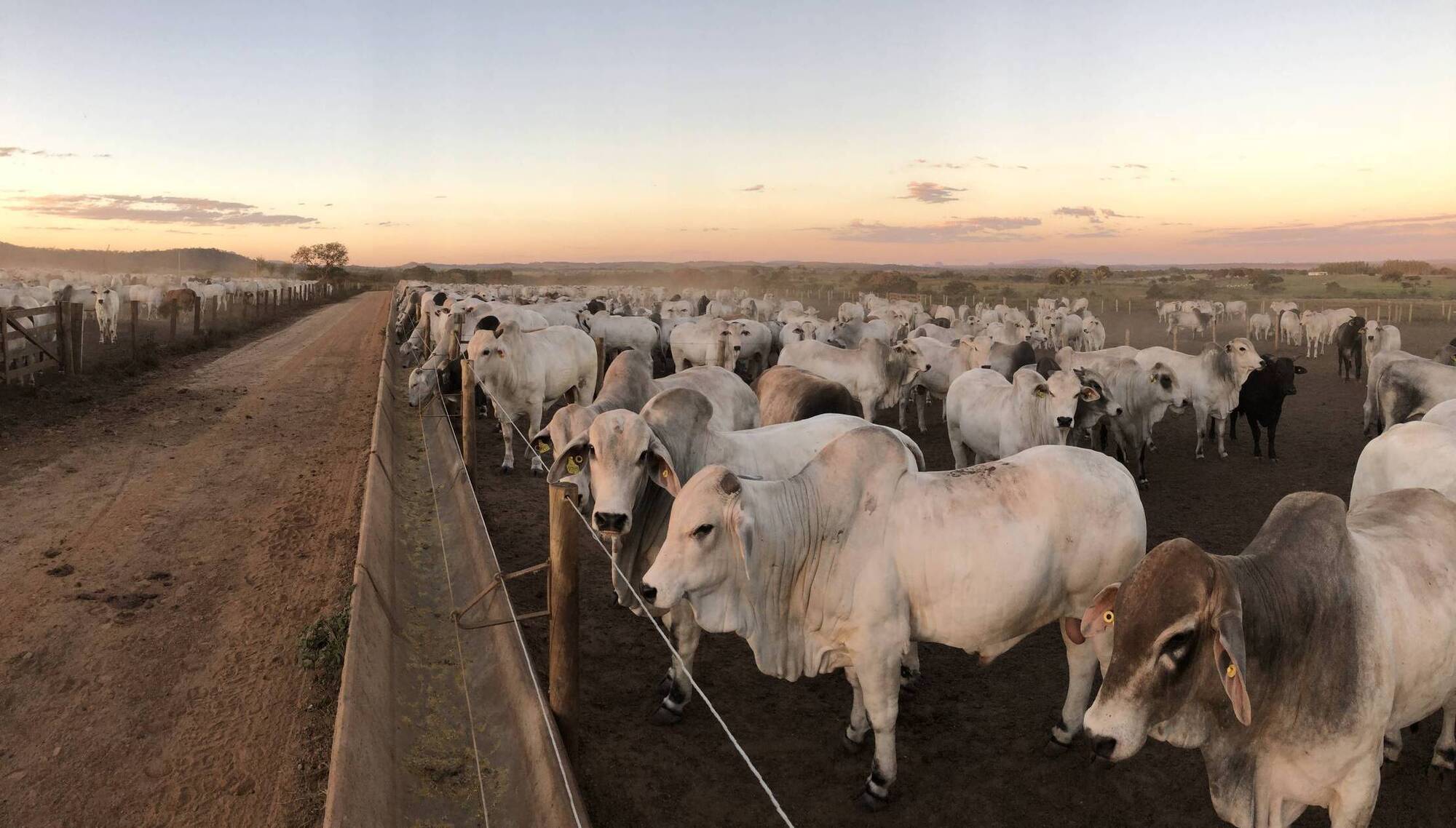Top Stories
Brazilian Beef Surge Threatens UK and EU Markets Amid Tariff Shift

A significant influx of Brazilian beef is poised to enter UK and EU markets following a new tariff of 76.4% imposed by the United States. This tariff has compelled American importers to drastically reduce their beef imports from Brazil, creating a surplus of approximately 165,000 tons that must find alternative markets. This situation raises concerns for Irish and UK cattle farmers, who are already facing inflated prices and potential market disruptions.
The impact of this shift could be exacerbated by the ongoing discussions around the EU-Mercosur Partnership Agreement. EU member states are set to evaluate a finalized agreement between Mercosur and the European Commission, which, if approved, could significantly affect cattle farming across Europe. The current high prices of beef in the EU are largely a result of years of rising input costs, labor shortages, and environmental pressures that have diminished herd sizes.
Farmers globally have struggled with low beef prices for an extended period, and many have been unable to sustain their operations due to climate action pressures. The average age of beef farmers is notably high, particularly in Ireland, where it approaches 60 years. This aging demographic poses a challenge for recovery and expansion within the sector.
In the United States, a similar trend is evident, where ranchers are capitalizing on high market prices by selling off their herds. As a result, both Ireland and the UK, along with other regions, are experiencing a beef shortage. Consumers now face significantly higher prices for beef products, prompting questions about market dynamics and the resilience of beef farmers.
John Cleary, the beef chairman of the Irish Cattle and Sheep Farmers’ Association (ICSA), noted a 3.8% decrease in the number of cattle in Ireland up to June. He warned that this decline could double in the coming year as farmers struggle to maintain viable stocking rates. The contraction in livestock herds is a pressing issue, according to Iain Macdonald, Market Intelligence Manager at Quality Meat Scotland (QMS). He emphasized the urgent need for action to address the high input costs and labor shortages that are contributing to this trend.
Despite this, Irish farmers are currently benefitting from elevated cattle prices. In recent weeks, prices for steers, heifers, and young bulls have surpassed those in much of the UK. As of last week, Irish farmers received an average of nearly 658 pence per kilogram for steers, while Scottish prices were slightly higher at 659 pence. Prices for heifers at Irish factories reached 661 pence, compared to 657 pence in Scotland.
The price dynamics within the EU have shifted noticeably, with Irish beef processing prices rising above those in many other member states since April. The average male carcass price in the EU is around €6.70 per kilogram, while it stands at €7.80 in Ireland, according to data from the European Commission. Projections indicate that Irish cattle farmers can expect prices to increase by at least 35% compared to 2024, contributing to significant income gains in the sector.
However, the long-term sustainability of these price increases is uncertain. Approximately 90% of Ireland’s livestock products are exported, with half of that beef going to the UK. As Irish prices have outpaced those in the UK, there is a growing concern about maintaining this trading relationship. Competing regions such as Brazil and Australia are already ramping up their beef exports to the UK, which is anticipated to increase by 6% this year.
UK retail beef price inflation has surpassed 9%, leading analysts to predict a 2.5% decline in total beef sales. British consumers are likely to adjust their purchasing behavior in response to these price hikes, potentially opting for alternative meats or reducing their overall beef consumption. Market information for the 12 weeks leading to mid-July revealed that average UK prices for beef products rose by 13% year-on-year, resulting in a volume decline of 7.4% (approximately 9,498 tonnes), despite an increase in spending of 4.6%.
As the beef market continues to evolve, farmers, consumers, and policymakers must navigate the complexities of supply and demand, pricing strategies, and international trade dynamics. The coming months will be crucial in determining how the Brazilian beef influx and changing market conditions will reshape the landscape for cattle farming in Ireland, the UK, and beyond.
-

 Top Stories3 months ago
Top Stories3 months agoTributes Surge for 9-Year-Old Leon Briody After Cancer Battle
-

 Entertainment4 months ago
Entertainment4 months agoAimee Osbourne Joins Family for Emotional Tribute to Ozzy
-

 Politics4 months ago
Politics4 months agoDanny Healy-Rae Considers Complaint After Altercation with Garda
-

 Top Stories4 months ago
Top Stories4 months agoIreland Enjoys Summer Heat as Hurricane Erin Approaches Atlantic
-

 World5 months ago
World5 months agoHawaii Commemorates 80 Years Since Hiroshima Bombing with Ceremony
-

 Top Stories3 months ago
Top Stories3 months agoNewcastle West Woman Patricia Foley Found Safe After Urgent Search
-

 Top Stories5 months ago
Top Stories5 months agoFianna Fáil TDs Urgently Consider Maire Geoghegan-Quinn for Presidency
-

 World5 months ago
World5 months agoCouple Convicted of Murdering Two-Year-Old Grandson in Wales
-

 World5 months ago
World5 months agoGaza Aid Distribution Tragedy: 20 Killed Amid Ongoing Violence
-

 World5 months ago
World5 months agoAristocrat Constance Marten and Partner Convicted of Infant Murder
-

 Top Stories4 months ago
Top Stories4 months agoClimbing Errigal: A Must-Do Summer Adventure in Donegal
-

 Top Stories4 months ago
Top Stories4 months agoHike Donegal’s Errigal Mountain NOW for Unforgettable Summer Views









